Introduction
Specifications and features
Announced in November 1998, the EF 100-400mm f4.5-5.6L IS USM was originally designed for film, but while it remained a popular and highly regarded model, the optical design required updating to meet the demands of new high-resolution bodies.
Adopting the same focal lengths and ratios, the new model has a redesigned optical formula consisting of 21 elements in 16 groups, and focusing to 3.2’ (0.98m). As well as featuring a single fluorite and Super ED glass element to reduce color blurring (principally at the edges of the frame), the new model features an improved 4-stop stabilizer (as found on the Mk II super-telephotos), and is the first to adopt the company’s new nano-tech Air Sphere Coating (ASC) to reduce flare and ghosting.
The original model featured a push-pull mechanism to zoom in and out, along with a friction collar to prevent “zoom-creep,” along with a separate manual focus collar. The new model dispenses with that and adopts a more modern two-ring design, yet it retains the friction collar as a part of the zoom ring rather than the focus ring, as was on the earlier model. The lens is weather-sealed, and has fluorine coatings on the front and rear elements to repel water and prevent smearing.
Slightly heavier and larger than its predecessor, the new model measures 7.6 x 3.7” (193 x 94mm) and weighs 3.5 lb (1640 g) with tripod mount. It is available now at around $2,200 (USD).
- 21 elements arranged in 16 groups
- Single fluorite and Super ED elements
- Weather-sealed
- Air Sphere and fluorine coatings
- Optical stabilization – up to 4 stops’ correction
- Ring type USM with IF
- Detachable tripod mount
Measurements: Competitive performer
Achieving an overall DxOMark score of 21 points on the full-frame 22-Mpix EOS 5D Mk III, the EF 100-400 f4.5-5.6L IS II USM ranks highly in our database. The new model has high levels of sharpness throughout the zoom range, transmission measured at T5.2-6.3, which is quite impressive, relatively low distortion though there’s some pincushion noticeable at 400mm, low vignetting and very good control of lateral chromatic aberration. To give you an indication of its overall optical qualities, it ranks alongside the Canon ultra-wide 16-35mm f4L IS USM and just behind the Canon super-tele 400mm f4 DO II USM at 22 points.
Canon EF 100-400mm f4.5-5.6L IS II USM vs. EF 100-400mm f4.5-5.6L IS USM: New model shows several enhancements
Compared with the original model, the updated version is improved in just about every metric. Acuity or sharpness has been improved, particularly at the shorter-end but less so at the longer focal lengths, although to be fair, Canon has improved sharpness in the outer field – towards the edges and corners – at the long end. Manufacturers look to improve uniformity rather than concentrate on center performance as they might of done in the past, perhaps it is so much easier now to check on screen.
Nevertheless, it’s a pity Canon hasn’t been able to raise sharpness in the center at 400mm, as this lens is likely to be used with the Canon crop bodies, particularly the EOS 7D Mk II, where only some of the gains in the outer field will be noticed. Still Canon have improved transmission, and greatly reduced chromatic aberration, particularly at 400mm. They’ve also lowered distortion between 150-300mm, but in doing so have introduced some barrel distortion at 100mm. Vignetting also been improved overall but we measured an increase in the corners wide-open at 400mm although that’s easy to correct in software.
Canon EF 100-400mm f4.5-5.6L IS II USM vs. Tamron SP 150-600mm f5-6.3 Di VC USD vs. Sigma 150-500mm f5.6-6.3 APO DG OS HSM: Strong performer
Canon’s main rivals are the relatively new Tamron SP 150-600mm at around $1,100 and the older $999 Sigma 150-500mm, although the latter model can be found for around $730 now as Sigma has recently released an updated version to compete directly with the Tamron (and which we’ve yet to assess). Both of the third-party models push the limits of AF sensors with their f6.3 maximum apertures but their longer focal lengths and more accessible pricing make them a very attractive prospect for wildlife photographers.
In truth their optical performance trails off at the longer focal lengths, particularly in the outer field when used wide-open but that may not be too much of an issue given the benefits. And of course both models are sharper at 400mm than when they’re at their longest focal lengths. Both the Tamron and Sigma have similar sharpness in the centers but the Tamron is sharper slightly at the edges, at least in our tests, though that will be difficult to see on a three-dimensional subject. With the sharpness dropping towards the longer end, the Canon follows the same trait as the others but even then the Canon holds its own, although in the lab it’s behind the Tamron in the center. Nevertheless at 400mm the Tamron also has good control of CA with similar levels as the Canon and it has low vignetting all while possessing similar levels of distortion.
Conclusion
As the replacement for the original model, Canon have improved just about everything they can from operation through to optical quality. However it’s the performance at the long-end that’s crucial and while Canon have made advances most of the gains are in the outer field where users of Canon’s crop bodies aren’t so likely to benefit. Sure the chromatic aberration is lower and sharpness at the edges is better than the old model but users aren’t going to see any improvement in the center.
The new model is also up against a capable and more accessibly priced rival in the form of the Tamron 150-600mm though it’s larger still and somewhat disappointing at 600mm. For all that, the Canon is an attractive option and a strong choice for the long term.






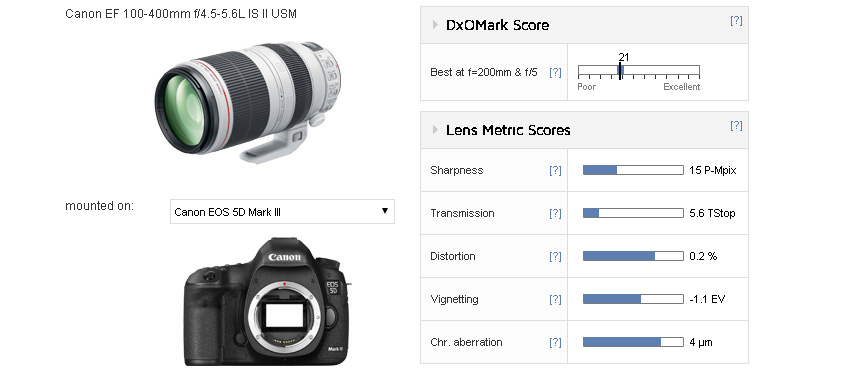
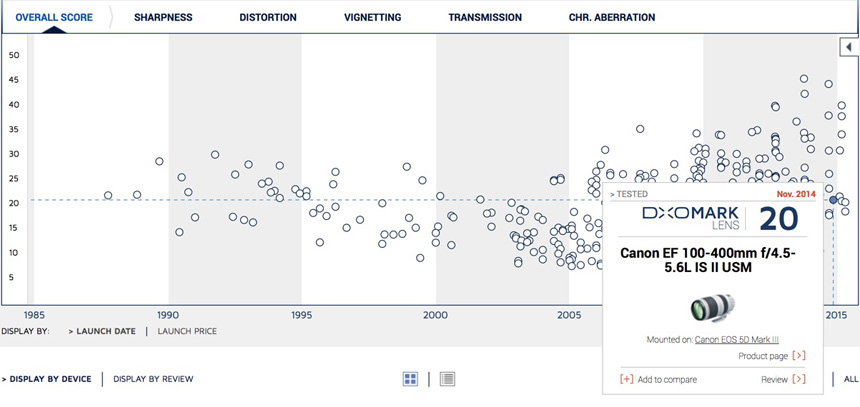
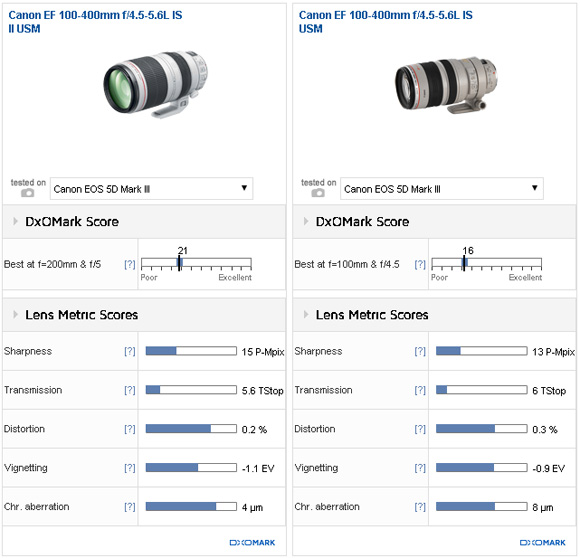
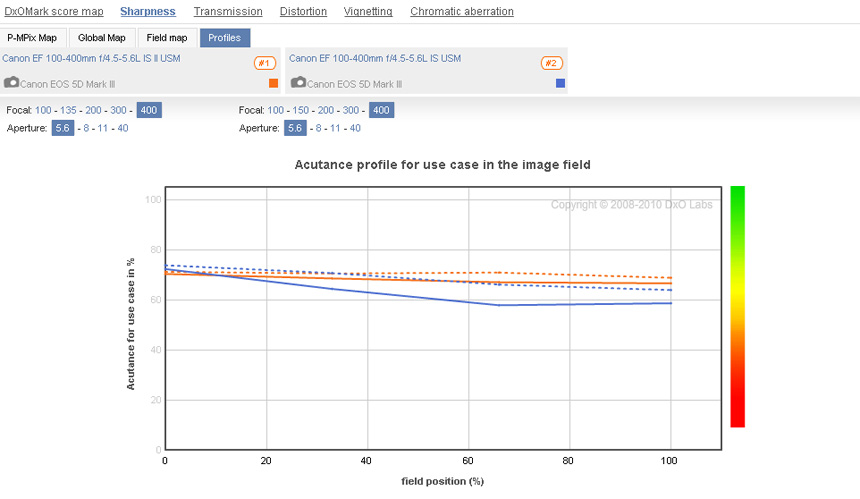
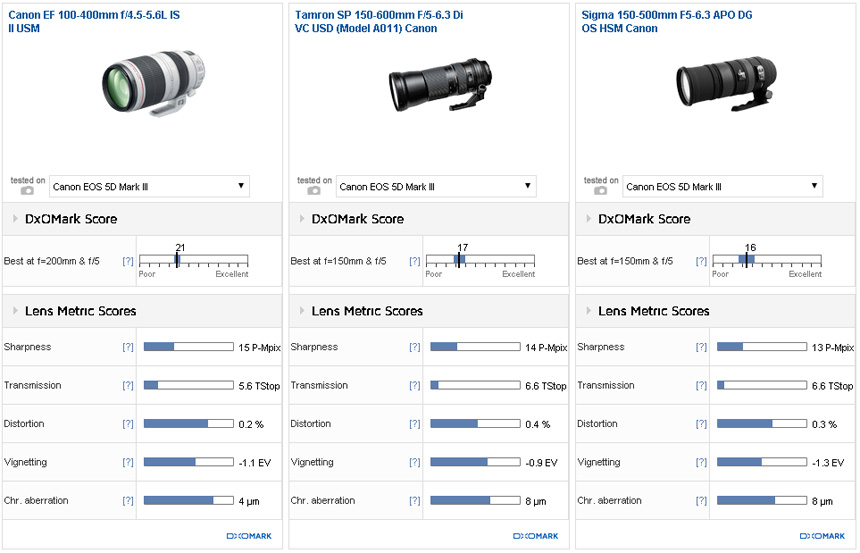
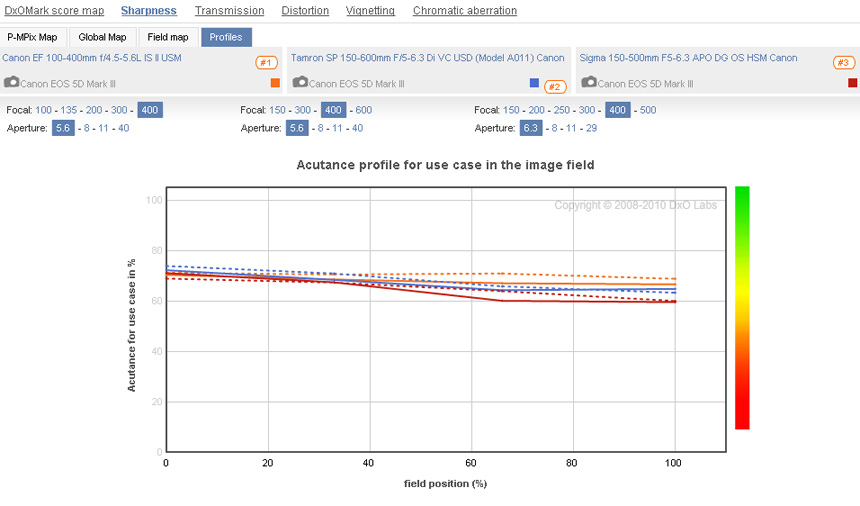
DXOMARK encourages its readers to share comments on the articles. To read or post comments, Disqus cookies are required. Change your Cookies Preferences and read more about our Comment Policy.